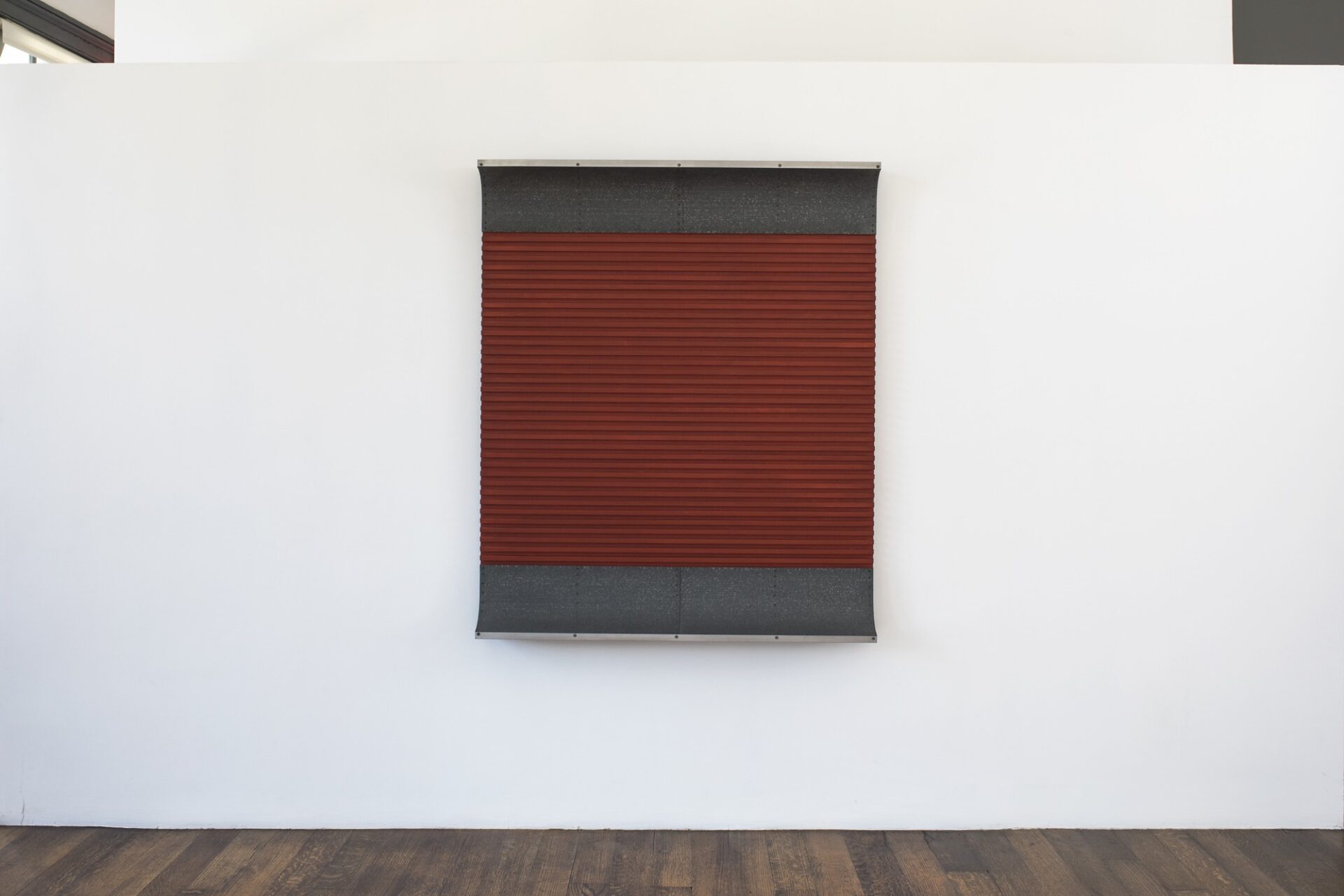This work is one of the first reliefs that Donald Judd made in the early 1960s. In a 1971 interview, Judd stated, “One of the first three-dimensional ones started off as a piece of canvas from a failed painting that I tried to turn up, but I couldn’t make the canvas turn up evenly. So after a while it occurred to me to change the material and use something that would curve naturally. I threw out the piece of canvas and replaced it with galvanized iron. . . . I went from low to high relief and then to free-standing works.”1
In the February 1964 issue of Arts Magazine, critic Sidney Tillim called this work the “most sensible, rigorous item” in Judd’s first solo exhibition at Green Gallery, New York (Don Judd, December 17, 1963–January 11, 1964). “Given the physical excrescence of the work,” he wrote, “the presence of paint is old hat, vestigial with illusionism; but the work’s claim upon space is real, an abstract object that verges on sculpture while retaining its pictorial axis.”2
